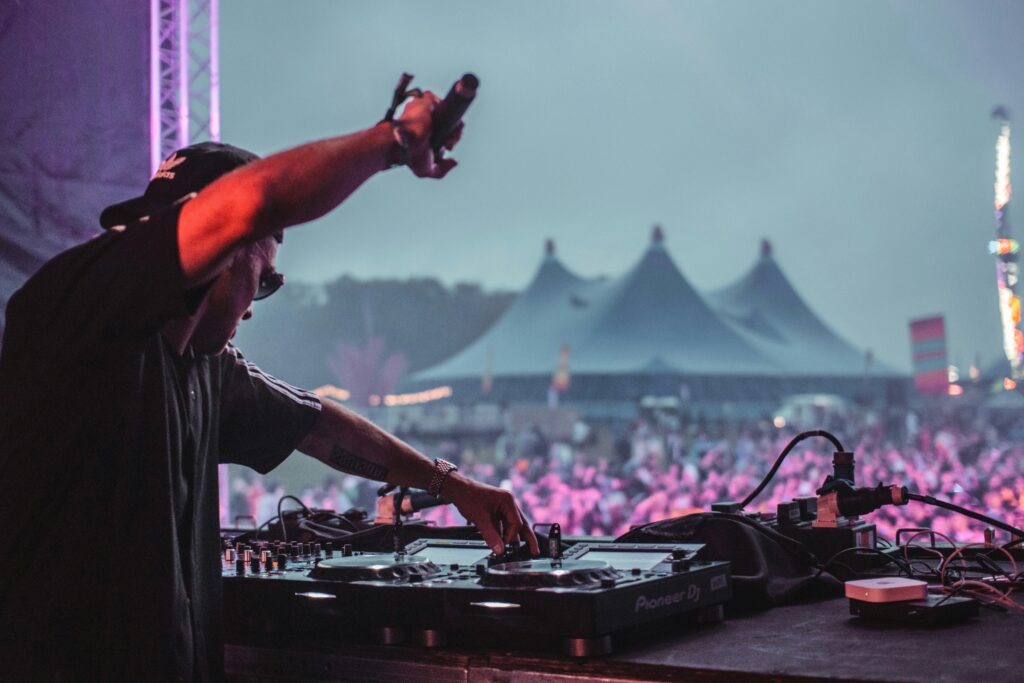Must-Experience Festivals in the World

World culture is a kaleidoscope of vibrant world festivals that define humanity's wealth, creativity, and shared indulgence. Sacred religious ceremonies through to modern works of art, world festivals provide tourists with the ultimate experience of authentic cultural immersions. Far from run-of-the-mill tourism, visitors are invited by festivals to join a people's most precious tradition.
This blog explores some of the globe's most stunning festivals, highlighting events that bring cultural substance together with memorable moments. If you are a fan of being awed by spiritual awakenings, art-fest hedonism, gastronomic excesses, or merely the electric aura of mob festivals, these events have experiences to remember for life.
Asia's Stunning Festivals
Holi Festival (India)
It is referred to as the "Festival of Colors" and celebrates the triumph of good over evil and the arrival of spring. This ancient Hindu celebration is a global phenomenon but experiencing it in India remains unmatched.
When: February-March (varies according to the lunar calendar)
Where: Throughout India, with particularly famous celebrations in Mathura, Vrindavan, and Jaipur
What to look out for: Streets transform into kaleidoscopic play areas as revelers shower each other with powdered colors and water. The place is filled with music, jokes, and fragrance of traditional desserts. The preceding night is characterized by bonfires symbolizing evil spirits being torched.
Tip from the local: Wear stuff you don't mind getting messy, cover up your camera equipment, and pretreat your hair and skin using coconut oil in order to be able to peel off the color easily.
Yi Peng Lantern Festival (Thailand)
One of the world's most beautiful festivals, Yi Peng features thousands of paper lanterns released into the evening sky, creating an emotional constellation of light.
When: November (12th lunar month's full moon)
Where: Chiang Mai, Thailand
What to see: Spiritual spectacle as hundreds of lanterns (khom loi) rise up, driving evil fortunes away and paying homage to Buddha. The dark silhouette of burning lanterns against a dark sky is an otherworldly, meditative experience furthered by candle-lit temples and drifting flower offerings.
Insider tip: Book accommodation well in advance and participate in the smaller, more intimate lantern rituals at temples rather than the tourist-friendly commercialized events.
Europe's Historic Festivals
Carnival of Venice (Italy)
Venice's carnival, which began in the 12th century, transforms the city on water into a giant masquerade ball, with attendees donning richly decorated costumes and masks evoking the Renaissance.
When: February (ending on Shrove Tuesday)
Where: Venice, Italy
What to observe: Grand parades, mask balls, gondola shows, and street entertainers. Tone is luxurious and enigmatic, with vintage clothes and original Venetian masks creating an active museum city-wide along piazzas and canals.
Insider's tip: Though the major festivals draw mobs of people, straying off less-touristy neighborhoods gets participants in vivo face-to-face action with genuine people celebrating.
La Tomatina (Spain)
Perhaps the biggest food fight on the planet, La Tomatina features spectators pelting each other with over a million squishy, ripe tomatoes in a wild festival that paints streets red.
When: Last Wednesday in August
Where: Buñol, Spain
What to do: One hour of frantic fun as onlookers launch hundreds of tomatoes, drenching the streets and themselves in a red splatter. There Is music, dancing, and a pole climb for the best ham position.
Insider tip: Wear loose clothing, goggles to protect your eyes, and crush the tomatoes first to make them less hard-hitting.
North America's Creative Gatherings
Burning Man (USA)
More than a festival but an impermanent society of radical self-expression, self-reliance, and art, Burning Man culminates in the incineration of a massive wooden effigy.
When: Late August to early September
Where: Black Rock Desert, Nevada, USA
What to expect: A dream city in the desert with interactive art installations, theme camps, performances, and an unusual gift economy where money does not exchange hands. The rough desert landscape along with the artistic community makes this a life-changing experience unlike any other festival.
Insider tip: Be prepared—bring everything you need for survival in the desert, including water and food and shelter. Embark on the ethic of "leave no trace" and public engagement.
Day of the Dead (Mexico)
Instead of mourning, this festival celebrates the dead beloved ones with coloring, food, and festivity, and subscribes to the idea that dead spirits come to their living individuals.
When: November 1-2
Where: Throughout Mexico, especially in Oaxaca, Mexico City, and Pátzcuaro
What to look for: Ornate altars with marigolds, sugar skulls, photographs of the dead, and their favorite foods. Graves become parties with picnics and music. Colorful parades feature people with calavera (skull) face paint and dressed as skeletons.
Insider tip: Attend a local family if invited to see the authentic, intimate aspect of the festival, and respect the religious aspects of the festival.
Africa's Rhythmic Rituals
Festival au Désert (Mali)
One of the world's most remote music festivals, this Tuareg festival brings together nomadic cultures for a musical, poetic, and desert traditions celebration.
When: January
Where: Originally near Timbuktu, Mali (venue has changed due to regional security concerns)
What to look out for: Three nights of entrancing performances of traditional Tuareg music, African blues, and guest international artists. The festival is held under the stars, where visitors sleep in traditional tents and enjoy nomadic hospitality.
Insider tip: Because of security concerns in the area, consult the official website for up-to-date locations and safety details prior to making your travel arrangements.
South America's Passionate Celebrations
Carnival (Brazil)
The largest carnival in the world combines samba dancing, outrageouscostumes, and massive street parties that feel like the country's energy.
When: February or March (before Lent)
Where: Throughout Brazil, with Rio de Janeiro hosting the most celebrated celebration
What to see: Stunning samba parades with competing schools dancing elaborate floats and costumes along the Sambadrome. Supplementing Official competition are dozens of street parties (blocos) with locals and tourists dancing in the streets to a variety of music styles.
Tip from the local expert: Have accommodation bookings a minimum of six months in advance and plan your personal bloco schedule through local apps tracking parade schedules and routes.
Inti Raymi (Peru)
This Incan festival to commemorate the god of the sun is commemorated on the winter solstice and features recreations of history at ancient sites.
When: June 24th
Where: Cusco, Peru
What to do: A colorful recreation of the ancient Incan rituals, with individuals in traditional attire conducting rituals at Sacsayhuamán fortress. The celebration is a one-day affair with processions, presenting symbolic offerings to the sun, and cultural performances.
Insider tip: Purchase central ceremony tickets well in advance, and arrive early to secure a good position at the fortress.
Oceania's Unconventional Gatherings
Pasifika Festival (New Zealand)
The largest Pacific Island cultural festival in the world celebrates the rich culture of the Pacific through music, dance, crafts, and food.
When: March
Where: Auckland, New Zealand
What to do: Eleven villages showcasing different Pacific cultures, each showcasing traditional performances, crafts, and cuisine. The festival provides a rare opportunity to experience many Pacific Island cultures in one venue.
Insider tip: Come hungry—the food stalls offer up genuine delicacies that are not easily found elsewhere outside of their homelands.
Planning Your Festival Adventure
Preparation Tips
- Study up: Familiarize yourself with the cultural heritage and proper manners for each festival.
- Book ahead: Accommodation books up fast for large festivals, sometimes a year ahead of time.
- Pack smart: Think about weather and festival-specific requirements (masks for Carnival, color protection for Holi).
- Be spontaneous: Festivals have a life of their own, and the most magical experiences are the ones that are not planned.
- Respect local customs: A lot of the festivals are religious or culturally significant and ought to be respected as such.
Sustainable Festival Tourism
As festivals grow in popularity, responsible tourism becomes increasingly important:
- Support local artisans and businesses
- Respect environmental laws
- Consider carbon offsetting for travel
- Join in the cultural significance and not merely see festivals as a photo opportunity
- Obey local advice on how to act and dress
Conclusion
The world's festivals offer glimpses into the hearts of cultures, revealing to us what people hold dear, admire, and remember. Beyond mere tourist sights, the festivals are living heritage that remain vibrant but continue to adhere to their original essence. Dancing in colored powder in India, in candlelit parades in Italy, or in drum circles in Mali, involvement in the festivals offers exposure to culture that regular traveling rarely provides.
By welcoming these festivals with respect, wonder, and an open heart, travelers can form deep connections across cultural boundaries and inscribe memories bathed in the common joy that defines humanity's most beautiful celebrations. The world's festivals invite—colorful, life-enhancing, and ready to welcome those who are willing to share in their magic.















